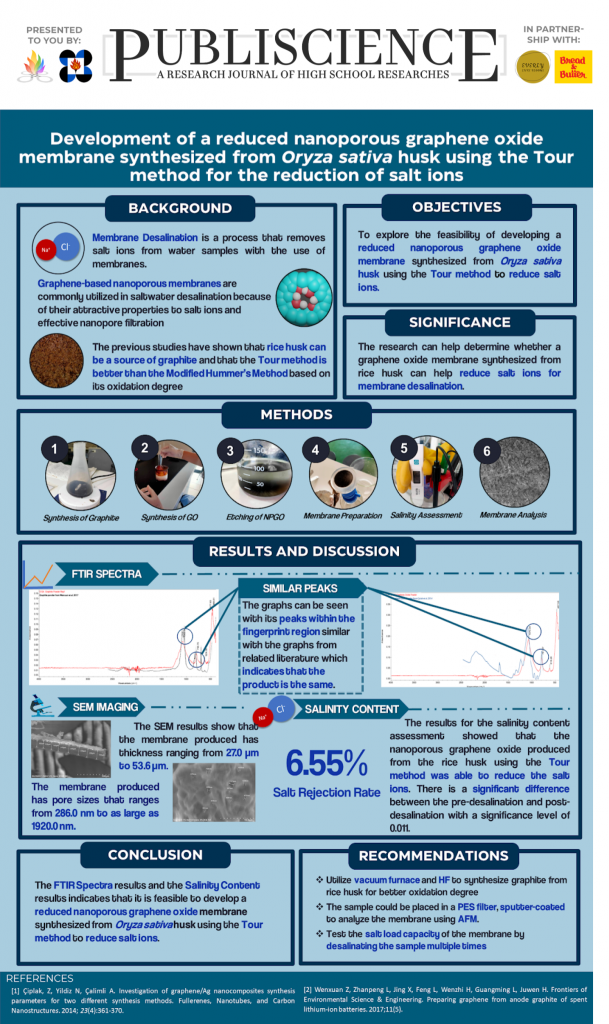Development of a reduced nanoporous graphene oxide membrane (rNPGO) synthesized from Oryza sativa (rice) husk using the Tour method for the reduction of salt ions
VENN DEO JUSTIN E. ALBALADEJO1, RAYMOND T. BORRES1, ZEDDREX N. NAVARRA1, ARIS C. LARRODER1, and MARK V. ROSALES2
1Philippine Science High School Western Visayas Campus – Department of Science and Technology (DOST-PSHSWVC), Brgy. Bito-on, Jaro, Iloilo City 5000, Philippines
2Metrology Laboratory, Regional Standards, and Testing Laboratories, Lapaz, Iloilo City 5000, Department of Science and Technology, Philippines
Abstract
Membrane desalination is limited by issues of high costs and energy consumption. Moreover, high-quality membranes require high carbon content sources such as biowastes, among others. One example of biowastes commonly found in the Philippines are Oryza sativa (rice) husks. Thus, this study aimed to determine the feasibility of developing a reduced nanoporous graphene oxide (rNPGO) membrane synthesized from Oryza sativa husks using the Tour method for membrane desalination. To assess the membrane, a salt solution (1% w/v) was prepared and subjected to membrane desalination. After three readings, the recorded mean salt rejection rate of the membrane was 6.55%. The results indicate a significant difference between the salinity content before and after desalination. Therefore, rNPGO synthesized from O. sativa husks using the Tour method can be used for the reduction of salt ions.
Keywords: graphene oxide, nanoporous membrane, Tour method, Oryza sativa, desalination


